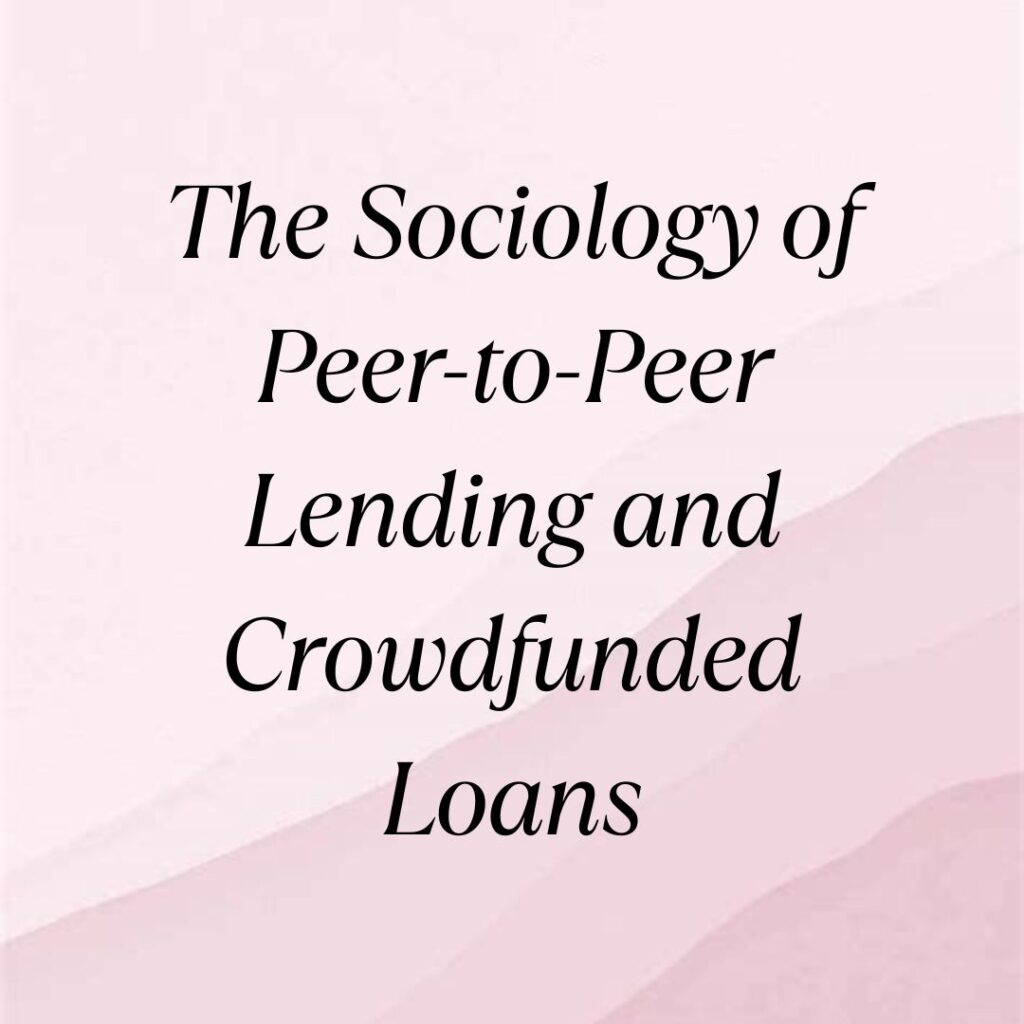In the ever-evolving landscape of finance, traditional lending practices are being reshaped by innovative approaches like peer-to-peer (P2P) lending and crowdfunded loans. These mechanisms harness the power of collective investment and social connectivity, fundamentally altering how individuals and businesses access capital outside of traditional banking institutions.
Understanding Peer-to-Peer Lending
Peer-to-peer lending, often abbreviated as P2P lending, operates on the principle of connecting borrowers directly with lenders through online platforms. This model bypasses the traditional financial intermediaries like banks, allowing individuals to lend and borrow money without the need for a middleman. The process typically involves:
- Platform Facilitation: P2P lending platforms act as intermediaries that match borrowers seeking loans with investors willing to lend money. These platforms provide the infrastructure for loan applications, credit assessment, and repayment schedules.
- Diverse Borrower Profiles: Borrowers on P2P platforms range from individuals seeking personal loans for various purposes (e.g., debt consolidation, home improvement) to small businesses needing funding for expansion or operations.
- Investor Participation: Investors, or lenders, participate by funding portions of loans across multiple borrowers, spreading their risk and potentially earning returns in the form of interest payments.
The Social Dynamics at Play
1. Community and Trust:
One of the fascinating sociological aspects of P2P lending is its reliance on community and trust. Unlike traditional banking, where decisions are based on credit scores and collateral, P2P lending often considers personal stories, peer endorsements, and social connections. This humanizes the lending process, fostering a sense of community among borrowers and lenders.
For example, platforms like LendingClub allow borrowers to create personal profiles detailing their financial needs and goals, appealing directly to potential lenders who may resonate with their stories. This personalization builds trust and encourages investment beyond mere financial metrics.
2. Financial Inclusion:
P2P lending has also emerged as a tool for financial inclusion, providing access to credit for individuals and small businesses that may face barriers in traditional banking systems. In many countries, especially in developing economies, where access to formal banking services is limited, P2P lending platforms offer a viable alternative.
For instance, in regions with underdeveloped banking infrastructures, platforms like Kiva enable individuals to lend small amounts to entrepreneurs in need, empowering local communities and promoting economic growth from the ground up.
3. Impact of Technology:
Technology plays a pivotal role in the proliferation of P2P lending. The advent of digital platforms and algorithms for credit scoring and risk assessment has democratized access to finance, making it possible for lenders and borrowers to connect across geographical boundaries seamlessly.
Platforms such as Prosper and Funding Circle leverage big data and machine learning algorithms to analyze borrower profiles and assess creditworthiness in real-time. This data-driven approach enhances transparency and efficiency in matching lenders with suitable borrowers, reducing the friction associated with traditional loan approvals.
Crowdfunded Loans: A Collaborative Approach
Crowdfunded loans operate on a similar premise of collective investment but are typically used for specific projects or ventures rather than personal finance. Entrepreneurs and businesses seek funding from a pool of individuals or institutions willing to contribute varying amounts towards a common goal. Examples include:
- Kickstarter: Known for creative projects, where backers pledge funds in exchange for rewards or early access to products.
- GoFundMe: Used for personal causes or emergencies, where individuals raise funds from their social networks.
These platforms harness the power of social networks and shared interests, transforming financial support into a communal endeavor. The success of crowdfunded loans often hinges on compelling storytelling, social media engagement, and the ability to rally supporters around a shared vision.
Relevance to Current Times
In recent years, the popularity of P2P lending and crowdfunded loans has surged, driven by technological advancements, changing consumer behaviors, and economic uncertainties. The COVID-19 pandemic, for instance, highlighted the resilience of these alternative financing models as traditional lending tightened.
Moreover, as societal trust in traditional financial institutions fluctuates, P2P lending and crowdfunded loans offer a transparent and participatory alternative, aligning with broader shifts towards decentralized finance (DeFi) and peer-to-peer economies.
Conclusion
The sociology of peer-to-peer lending and crowdfunded loans underscores the transformative power of community, trust, and technology in reshaping financial landscapes. By fostering direct connections between borrowers and lenders, these models not only democratize access to capital but also nurture social cohesion and economic empowerment. As we navigate an increasingly interconnected world, these alternative finance mechanisms are poised to play a pivotal role in shaping a more inclusive and resilient financial future.







